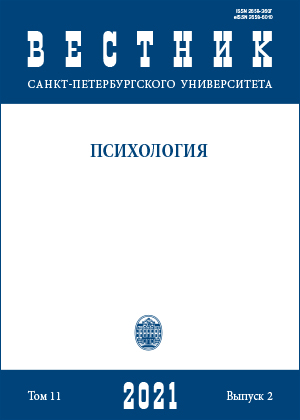Protective and provocative family factors of aggressive behavior in children and adolescents
DOI:
https://doi.org/10.21638/spbu16.2021.202Abstract
The article examines the protective and the provocative family factors of aggressive behavior in children and adolescents. The negative influence of aggression on the process of socialization is described as well as possible ways of preventive influence to even out the negative influence. During the analysis of scientific literature, including empirical studies of family factors and their influence on the manifestation of aggressive behavior in children and adolescents, two significant clusters are identified: a family’s socio-demographic factors and intrafamily psychological factors as well as social attitudes. In this article, the authors describe a family’s psychological factors, and social attitudes in terms of their protective or provocative influence on the manifestation of aggressive behavior in children and adolescents, as well as in terms of a possible preventive and/or corrective effect on these factors. The frequent manifestation of acts of aggression, as well as the high level of aggressiveness and hostility of children and adolescents relative to the average indicators of their society, is considered as a consequence of deviations in the process of their socialization. The relationship between aggressive behavior and socialization allow the authors to state the importance of a complex integrated approach to the prevention and correction of the aggressive behavior of children and adolescents from the “risk group” from such “agents” of socialization as family and school. The work also examines current examples of complex preventive impact on the personality of a student with the help of positive psychological interventions (PPI), based on the example of foreign experience in the use of PPI. In addition, it substantiates the need for coordinated interaction between the institution of the family and the educational institution for an effective positive impact on the processes of socialization, as well as for the prevention and/or correction of aggressive behavior of minors.
Keywords:
aggression of children and adolescents, aggressiveness, socialization, family system, prevention of aggression, positive psychological intervention
Downloads
References
References
Hazler, R. J. (1996). Breaking the cycle of violence: Interventions for bullying and victimization. London, Taylor & Francis.
Downloads
Published
How to Cite
Issue
Section
License
Articles of "Vestnik of Saint Petersburg University. Psychology" are open access distributed under the terms of the License Agreement with Saint Petersburg State University, which permits to the authors unrestricted distribution and self-archiving free of charge.




